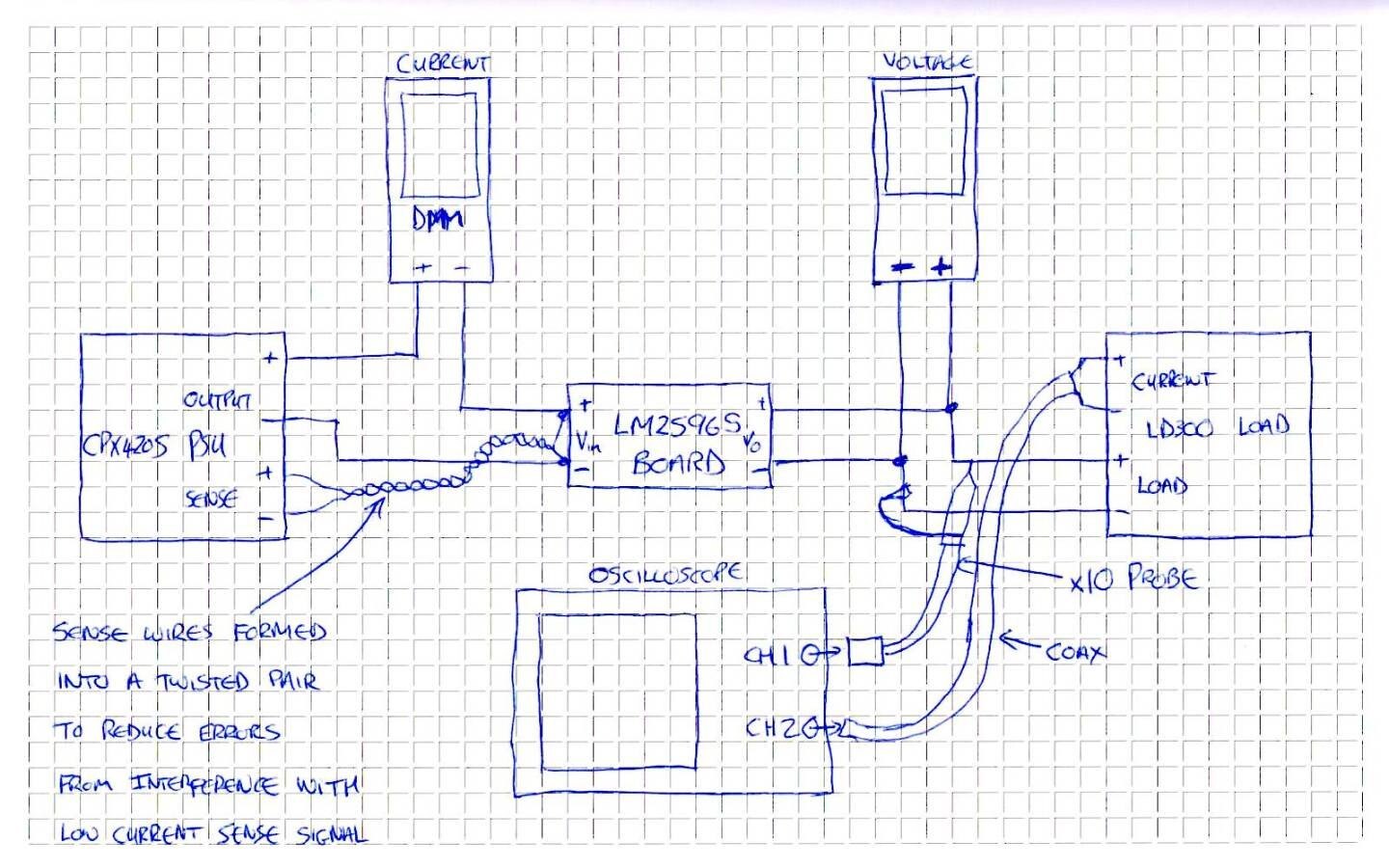Overview
For those of you that saw my blog yesterday on my experiments with a cheap LM2596S based DC-DC converter board you are no doubt aware that under one of the test conditions my first test board emitted the magic smoke. If you haven't seen that already I suggest you go and take a look there first:
Lab Experiments - Performance Evaluation and Testing of LM2596 DC-DC Converter Board
I was setting up my second board today so I could continue where I left off and get that blog finished off when I discovered something in my test setup which explains a lot.
Test Setup
I described the test setup yesterday but for completeness I will cover the important sections here again.
The input of the LM2596S board will be from the TTi CPX400SCPX400S Power Supply The KeySight https://www.element14.com/community/view-product.jspa?fsku=1848657&nsku=NULL&COM=noscriptU1272A will be wired in series with the positive input voltage to measure the input current. The remote sense will connect directly at the input of the board such that it will compensate for any losses in the cable and also the burden voltage of the ammeter As stated previously with this compensated supply voltage the input voltage will be read directly from the set voltage on the power supply
The test setup is shown below:
The Problem
There are two important things to note from the setup above:
- The remote sense is being used to compensate for voltage drops in cables and the burden voltage of the multimeter to maintain the voltage accurately at the input to the board.
- The Keysight U1272AU1272A multimeter is in series with the power supply to accurately measure the current flowing into the input
Now, something which is slightly annoying about the Keysight is that it times out and goes to sleep quite quickly, too quickly IMHO. When it switches itself off you have to turn the dial all the way round to the OFF position and then back to where you want it to be.
During testing yesterday I found that if I left the connections as per the above when I was trying to wake it up it would sometimes lock up and then to recover I would have to switch it off and leave it for a few minutes. The first time that happened I did panic a little as I thought I had killed my DMM!
I thought I would solve this by just disconnecting the supply into the meter (pulling it out so to stop it complaining when going through the other switch points) as I was bringing it back to life. This was working fine for most of the testing. Then as I set up for 40V input (the max operating voltage of the LM2596S) and prepared to rerun the measurements the meter timed out again and I performed the above. Upon resuming testing I discovered the magic smoke was rising up from my bench.
So... back to my first points about the important things to note. Firstly I am using the remote sense so if the voltage at the board is too low the output of the supply will ramp up to compensate. Secondly the multimeter is in series with the power supply so when I pull the lead to reset my meter the voltage at the board drops to 0V.
Do you see where I am going with this?
Theory Number 1:
Sigh.... yes you guessed it, when I pulled the cable to reset the meter the power supply ramped up its output. Upon plugging the cable back in this raised supply voltage was applied to the board and as we were already at the 40V max input the extra voltage killed it.
Theory Number 2:
Naughty Power Supply! Something I noted when connecting the board up to the setup is that connecting the remote sense without having the actual power supply output connected leaves the LM2596S board in a cycle of switching on enough to power it's LED for a second and then going off. I thought this was odd behaviour and was going to come back to investigate at a later date but I just blew board number 2 trying to find out what voltage the power supply reached in the scenario above.... The failure mode of this board is different, this board gives almost no output but consumes 2A and the LM2596S get exceedingly hot.
Conclusion
Now that I have understood the two scenarios which lead to excess input voltage (well above the Abs Max of 45V for the LM2596S) being applied to the board it's probably a little unfair to say that the board doesn't work at the specified 40V input until I have done some further testing on it. I suspect it will work at this input but it remains to be seen whether it is stable and what efficiencies can be achieved. What can be said is that there is no protection on the board to prevent the IC getting damaged by surges over and above the maximum normal working voltage and for a more robust design there perhaps should be. I'll cover this in more depth in a future blog.
I've also learned to remember to remove the 16V rated 470uF electrolytic capacitor from the terminal posts of my power supply before I ramp the supply up to 40V (with a 5A current limit) and turn the output on.... Welcome to magic smoke emissions number two....


Top Comments
-

DAB
-
Cancel
-
Vote Up
+1
Vote Down
-
-
Sign in to reply
-
More
-
Cancel
Comment-

DAB
-
Cancel
-
Vote Up
+1
Vote Down
-
-
Sign in to reply
-
More
-
Cancel
Children